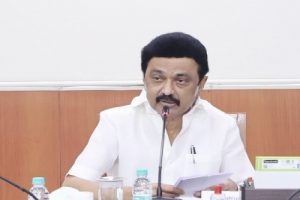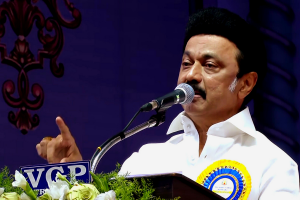The first generation of fiscal reforms in the states started with the enactment of Fiscal Responsibility and Budget Management Acts (FRBMA) between 2006 and 2010 at the prodding of the 12th Finance Commission. This triggered a movement towards fiscal consolidation among all the states which gradually led to substantial improvement of their fiscal parameters. Most states were able to generate revenue surpluses, reversing the earlier trends of soaring revenue deficits, and set themselves on a path of growth by investing these revenue surpluses to create capital assets which hitherto were financed entirely by borrowed capital.
In its recently released report on “State Finances ~ A Study of Budgets”, the RBI has proposed a set of second-generation reforms for fiscal consolidation in the states of India. It includes a set of proposals, including improvement in fiscal marksmanship through adoption of the widely used Public Expenditure and Financial Accountability (PEFA) framework developed by seven international partners including the World Bank, IMF and EU, setting up of state institutions of transformation like the Niti Aayog in every state (seven states have already done so), etc. Here I am highlighting some major areas needing urgent focus. Due to their high indebtedness, by 2000, all the states were on the brink of disaster from which they turned around one by one, with their consolidated gross fiscal deficit (GFD) falling from an average 4.3 per cent of GDP between 1998-99 and 2003- 04 to 2.7 per cent between 2004- 05 and 2023-24, overcoming the massive disruptions caused by the Covid pandemic.
Advertisement
Their overall debt also declined from 31.8 per cent of GDP in 2003-04 to 28.5 per cent of GDP in 2023-24, though it was still way higher than 20 per cent recommended by the FRBM Review Committee in 2017. But all the states are now again facing financial stress due to the compulsions of electoral politics which are making them spend more or more on freebies in the form of cash transfers.
Delivering on governance is tough, but delivering on the promises of freebies is easy, thanks to the Direct Benefit Transfers (DBT) effected through Jan-Dhan accounts which ensures seamless transfer of cash without any leak age. Freebies defy all economic logic, and the argument proffered by politicians that they will boost consumption and create a multiplier effect far exceeding the expenditure is an eyewash that fools no one. But voters lack rationality and incentives ~ especially cash incentives ~ work; hence freebies fetch votes. The BJP that had earlier spoken against “Revadi” culture has also been forced to join the bandwagon due to electoral compulsions.
The upcoming Delhi election campaigning is seeing an incessant shower of free goodies be – ing promised by all political parties which are trying to outdo each other in this sordid game. ut such irresponsible promises have already started exacting their prices ~ several states like Karnataka, Punjab, Rajasthan, West Bengal, Kerala, Bihar etc. are struggling for funds to deliver on the promises and yet to find resources for development expenditure; more states are likely to follow.
Freebies have now become integral to politics in every state and with every party, and they are here to stay for sure. States will have to live with the new reality, no matter what. In the process, some hard-earned fiscal gains are being frittered away by selfserving politicians who can sell the country in their greed for power. As part of their populist agenda, opposition ruled states have reverted to the Old Pension System (OPS) by junking the new National Pension System (NPS) that all states except Tamil Nadu and West Bengal had adopted earlier, as part of the pension reforms introduced in 2004-05.
While liability of the government towards the unfunded OPS is unlimited and did not cease even at the pensioner’s death, liability under the NPS is limited till the employees retire who also contribute to it monthly, matched by a little higher contribution from the government. NPS thus significantly reduced governments’ pension liabilities, freeing some fiscal space for developmental expenditure. Reversion to OPS has created considerable strains for these states ~ a research paper published by the RBI earlier had estimated that liabilities for the states that have either reverted back to the OPS or not implemented the NPS would increase 4.2 times compared to the NPS.
Demands of realpolitik have also forced the Central government to come up with a Unified Pension Scheme (UPS) as an alternative to the NPS, to assure pension at 50 per cent of the last pay drawn like the OPS, with family pension, a minimum pension after 10 years of service and inflation indexation. The Central government hopes the UPS which remains funded by employees’ contribution with still higher contribution from its side (18.5 per cent instead of earlier 14 per cent as against 10 per cent of salary and DA by the employees) would not constrain public finances unsustainably, with an estimated additional burden of only Rs 6,250 crore annually, though it may be higher in FY 2025.
UPS is available for adoption by State governments, but states which have reverted to the unfunded OPS have so far shown no appetite for it because of its funded nature which may hurt their populist appeal. But besides pension, states are now implementing a set of guarantees which are nothing but handouts promised at the time of electi ons for bribing vo ters. It is fraught with the dangerous possibility of straying away from the path of fiscal consolidation that was forc ed by the FRBMAs. Continuous indulgence in freebies by the states will curtail their capital expenditure (capex), thereby seriously impeding their potential for growth. Since development takes place only in the states, their failure will convulse the entire national economy with disastrous consequences which the Centre will be unable to control.
The major problem that the states now face is how to keep within their FRBMA targets due to these freebies and other subsidies without sacrificing capex. They cannot afford to compromise on capex as it will cost them dear in terms of growth, and more importantly, employment, which will affect the voters. Economic principles tell us that while capex increases both demand and supply, revenue expenditure (revex) increases only demand by putting money in people’s hand only in the short term. As there is no asset being built, there is no increase in supply, and hence its employment generating potential remains low. Besides, capex increases con struction activities that create jobs in both formal and informal sectors, with their linkages in sectors like steel, cement etc.
Capex also crowds in private investment, which revex crowds out, because higher capex and resulting higher growth and higher savings help expand the pool of savings available to both private and public sectors, unlike revex that does not contribute much to the pool of savings. Higher revex instead forces the government to borrow, thus crowding out private investment. As reported by Krishnamurthy Subramanian, the former Chief Economic Advisor, in his book “India@100”, economists have estimated that an increase of Rs. 100 in revex adds only Rs. 98-99 to the economy due to the deadweight costs, while an increase of capex by the same amount adds Rs 245 in the same year and Rs 480 over several years. The multiplier effects of capex have been estimated at 2.4-2.6 times that of revex; besides, capex has also been found to reduce inflation much more than revex.
When private investment dwindles during economic crises, it is for the governments to increase capex to sustain growth; if that capacity is lost due to unproductive freebies, it will spell disaster for the economy. The RBI Report calculated the ratio between revex and capex (RECO) and found that it is highest for Punjab at 17.1 this fiscal, more than three times the national average, followed by Puducherry (14.1), Kerala (10.6), Delhi (10.3), Haryana (8.3), Bihar (7.7) and West Bengal (7.5) whe re the high level of cash transfers and subsidies are limiting capex. Some states have done much better, like Gujrat (2.9), and Sikkim and Arunachal Pradesh (3.1). The real challenge for stressed states like Punjab or West Bengal is how to improve the RECO despite huge unproductive spending on the promised freebies ~ either by more carefully targeting them, while increasing revenue efficiency thro ugh use of technology and other means. These are difficult optio ns that the ruling parties in the states may find electorally and politically unacceptable.
Institutions of the country like the Election Commission, Finance Commission and even the Supreme Court have earlier failed to restrain the politicians from promising unlimited freebies to voters in their pursuit of power, regardless of their costs to the nation. We may have to wait for a financial collapse for them to correct course, but it may be too late by then. The slowing growth of our economy, followed by a collapsing stock market and a falling rupee against an ever-rising dollar on the strength of Donald Trump’s “America First” policy, is already blinking deep red signals.
The freebie culture is the greatest threat to achieving our goal of Viksit Bharat and if the Centre is serious about achieving it by 2047, it must waste no time to initiate a process to bring all political parties on board to curb this menace. The budget session may be a good opportunity to begin, and another federal institution like the GST Council especially for fiscal consolidation may help.
(The writer is a commentator, author and academic. Opinions expressed are persona)











